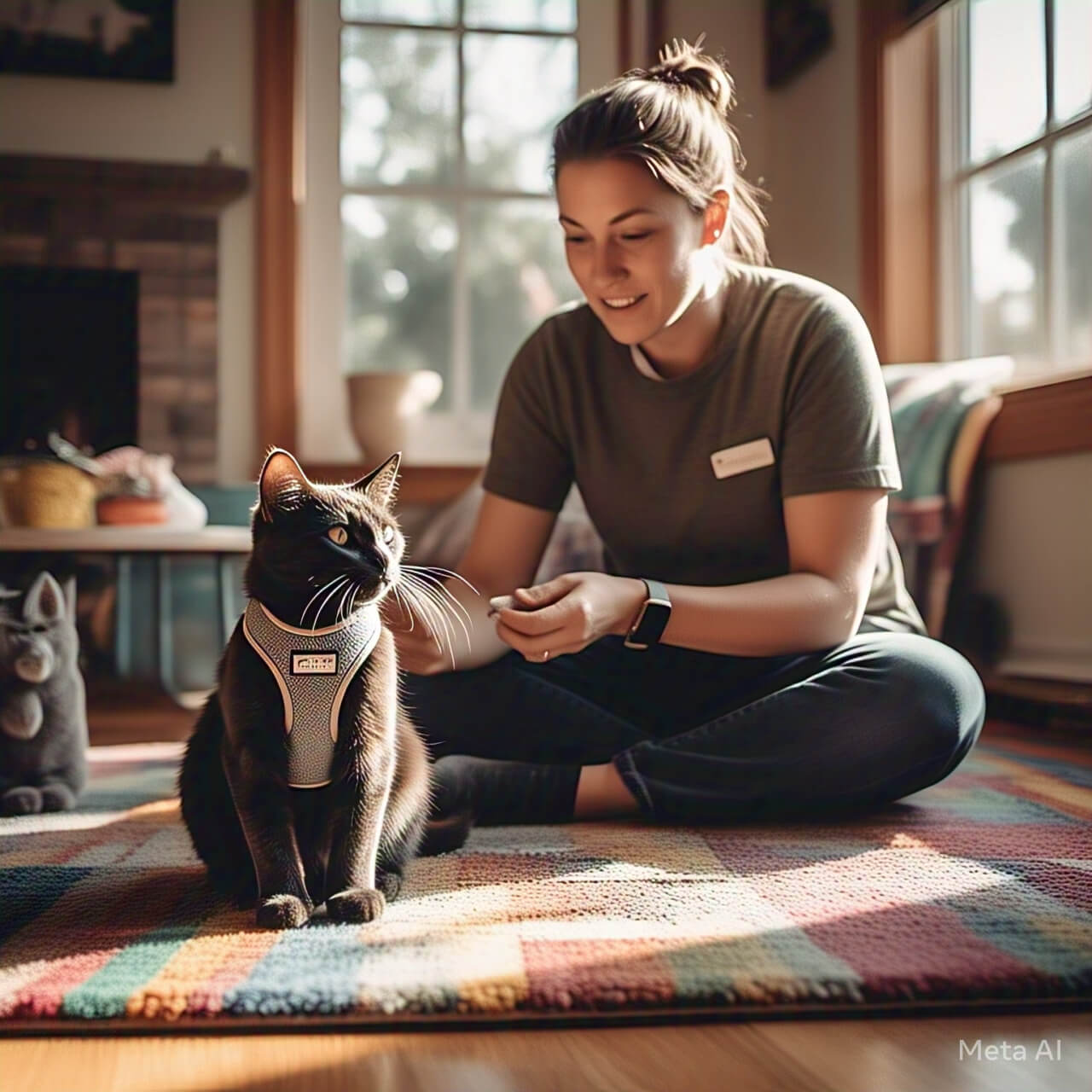How to Teach a Cat to Sit. Teaching a cat to sit is a fun and rewarding experience for both you and your pet. Unlike dogs, cats are independent, but with patience and the right approach, they can learn tricks like sitting on command. The key is to use positive reinforcement, such as treats and praise, to encourage good behavior.
Start in a quiet place with no distractions, and keep training sessions short (5-10 minutes) to hold your cat’s interest. Always end on a positive note, even if progress is slow. Over time, your cat will associate sitting with rewards and follow your command.

10 Tips on How to Teach a Cat to Sit
- Use tasty treats.
- Keep sessions short.
- Be patient.
- Reward immediately.
- Use a clicker (optional).
- Repeat daily.
- Stay calm.
- Avoid forcing your cat.
- Praise often.
- End on a good note.
1. Understanding Your Cat’s Behavior
Before teaching your cat to sit, understand their nature. Cats learn best when they feel safe and motivated. If your cat seems stressed or disinterested, try later. Watch their body language—ears forward and tail up means they’re engaged. Never punish your cat; it will make training harder. Instead, focus on rewards and gentle guidance.
2. Choosing the Right Treats
Cats love food, but pick small, soft treats they enjoy. Break them into tiny pieces so your cat stays eager without getting full quickly. Treats like tuna bits, chicken, or store-bought cat treats work well. Avoid overfeeding—training should be fun, not a meal.
3. Using a Clicker for Training
A clicker marks the exact moment your cat does something right. Click when your cat sits, then give a treat. This helps them connect the action with the reward. If you don’t have a clicker, a clear “Yes!” works too.
4. Luring Your Cat into a Sit
Hold a treat near your cat’s nose and slowly move it back over their head. As they follow the treat, their bottom will naturally lower. The second they sit, say “Sit,” click (or praise), and reward. Repeat this often.
5. Adding the Verbal Command
Once your cat sits with the lure, start saying “Sit” before moving the treat. This helps them link the word with the action. Be consistent—always use the same command.
6. Practicing in Different Places
Cats don’t generalize well, so practice in different spots—the floor, couch, or bed. This helps them understand that “Sit” means the same thing everywhere.
7. Reducing Treats Over Time
Slowly give treats less often but keep praising. This teaches your cat to obey without expecting food every time.
8. Keeping Sessions Fun
If your cat walks away, don’t force them. Training should be enjoyable. Try again later when they’re more interested.
9. Troubleshooting Common Problems
If your cat won’t sit, they may be confused or distracted. Go back a step, use better treats, or shorten sessions.
10. Celebrating Success
When your cat sits on command, celebrate! Give extra praise or a special treat. This strengthens their good behavior.

FAQs About How to Teach a Cat to Sit
| Question | Answer |
|---|---|
| Can all cats learn to sit? | Yes, with patience and the right rewards. |
| How long does it take? | Some learn in days, others weeks—stay consistent. |
| What if my cat ignores me? | Try higher-value treats or a quieter space. |
| Should I punish my cat? | No—always use positive reinforcement. |
| Can older cats learn tricks? | Yes, but they may need more time. |
Teaching your cat to sit strengthens your bond and keeps them mentally active. With patience and these steps, your feline friend will master the trick in no time.









